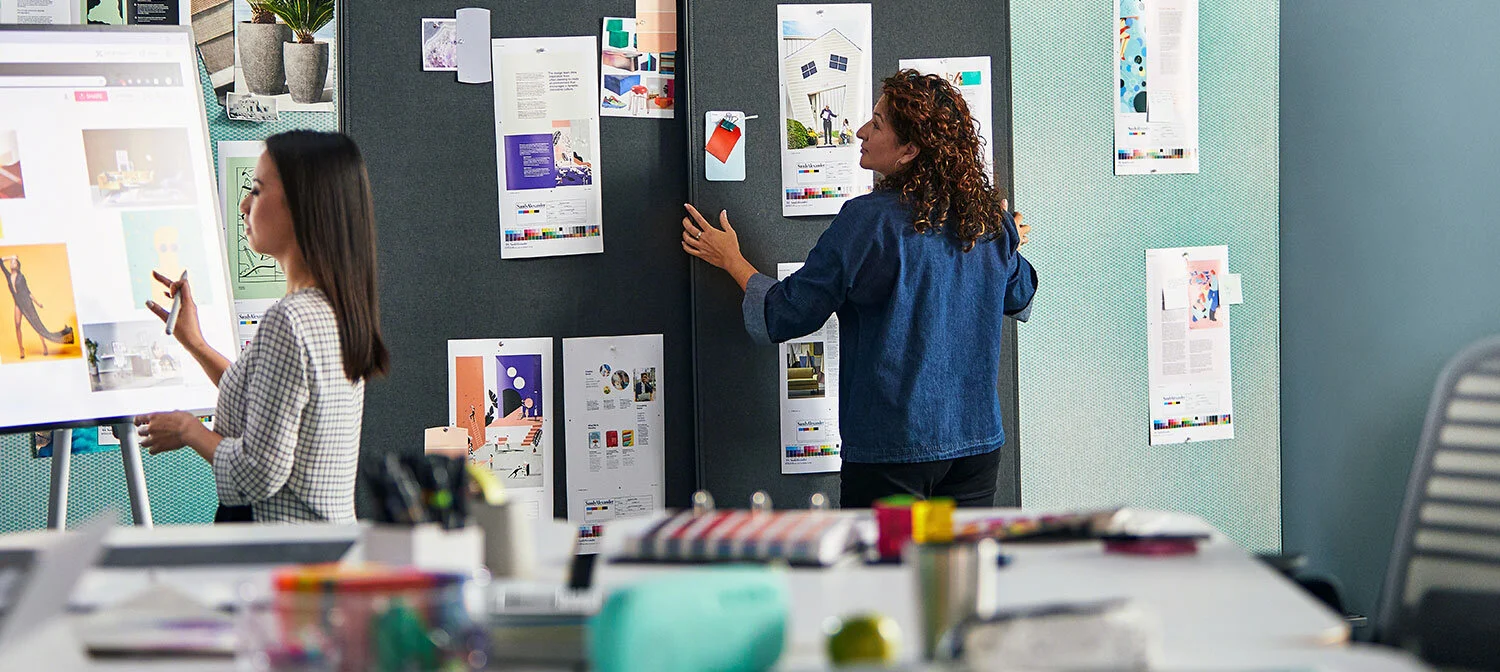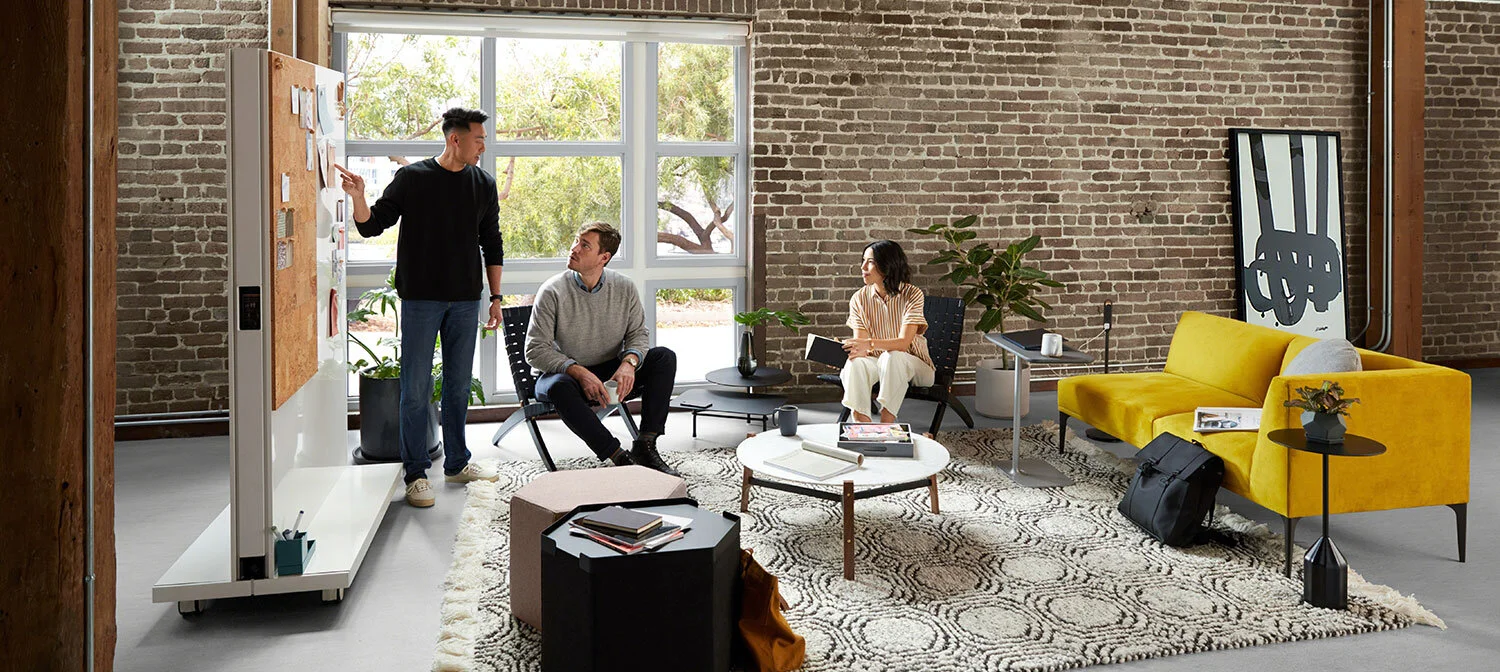Out with the Open Office, in With Human-Centered Design

Alex Hayes
Director of SalesI have been with Hyphn for four years and brought with me over a decade of business ownership, consultative training, and management experience. I received my MBA from Portland State University in 2017. I take great pride in leading the team of tenured individuals at Hyphn that guide clients through our process to help them find success that’s uniquely meaningful for them. When I’m not at work, you can find me with my amazing daughter and husband playing with our dogs or hosting dinner with friends.
Many clients (or potential clients) walk through our door expecting us to have a conversation that begins and ends with stuff. They come equipped to talk about plugging the right thing in the right corner of their space. Which, of course, when they’re working with a clever, competent workplace advisor, that’s what we do. But when we see a client cracking open the worn out open-office playbook, we hit a full stop.
Ever wonder why the cubicle died? Find an answer to that, and we pinpoint the reason why the open-office concept is soon to be a thing of the past. Neither celebrates the individual.
Even with flashy amenities like a few beers on tap and a ping pong table, the workforce is increasingly dissatisfied with an office that can’t accommodate them as an individual—unique from everyone else that walks through the door in the morning. Just as we’re incredibly different from our colleagues and teammates, so are our workstyles. Even when we all set out to accomplish a similar set of tasks in a day, work is dynamic; kinetic even. It’s messy. To give everyone one type of space to accomplish it all—whether that’s a cubicle or desk in an open office—is shortsighted.
Designing for the Individual
Gone are the days in which an employee is expected to “leave her personal life at the door.” We all want, and expect to bring our full selves to work. As workplace consultants, we notice this most starkly illustrated in the way people are bringing in their own personal belongings to customize their workspaces. Beyond desk toys and tabletop plants, we see this happening with ergonomic seat cushions, softer light, essential oil diffusers, and other things that remove a bit of the distance between their workspace and the comfort and autonomy of their own home.
Instead of putting the onus on each person, though, companies are beginning to realize the value in designing spaces that honor individuality, personal needs, and the many different styles and types of work each employee takes on every single day. Though the task may seem daunting, it starts with simply asking the question: “how can our space elevate our business goals?”
Utilizing the many sophisticated tools available to us thanks to leading industry partners like Steelcase, we can easily conduct surveys, lead small focus groups, and work closely with the leadership team long before we even broach the topic of furniture.
When it all comes down to it, though, you simply can’t accommodate everyone’s wishes—that much is obvious. We think that everyone should have a voice, not necessarily a vote. It continually surprises our clients how much of a difference inclusion in the process can make and making it clear that the end result is a strategic decision based on consideration that includes everyone’s voice.
Diversity, Equity, and Inclusion
We’re finally seeing more of a long-overdue shift in office design: centering diversity, equity, and inclusion. For far too long our industry rested on things like wheelchair-accessible egress as litmus tests for inclusive design. But there’s a huge difference between checking a box and designing for an actual person. This is a big challenge. We’re working to shift our thinking (and our clients’ too) to consider sensory sensitivity, language, race, sexual orientation, gender, age, class, and more from the very outset of a project.
For example, consider a space in which many coworkers figuratively collide, like a kitchen. They’re imperative for side conversations, casual brainstorming, eating, and generally connecting, but they can be supremely overwhelming for someone who lives with a high sensitivity to visual and auditory stimulation. While there will never be a go-to blanket design fix to this challenge, when we raise awareness of this to the leadership team and consider the actual particularities of the people that will be needing to use this space, we can design the space with strategic noise dampeners, modify the color palette, or even address it with simple policies for the new space. There’s no go-to fix, but it all starts with a conversation.
Why Does This Matter?
Simply put, we spend the majority of our waking hours in the office. When we design spaces that celebrate the individuality of the people that show up every day, it changes the way they work. When a person is empowered to bring 100% of themselves to work, we see clear spikes in productivity, creativity, and the ability and willingness to speak up. When this happens on a massive scale, we see society changing and evolving alongside. So when anyone asks us why this all matters, we respond that we truly believe we’re part of positive change. One workplace at a time.



